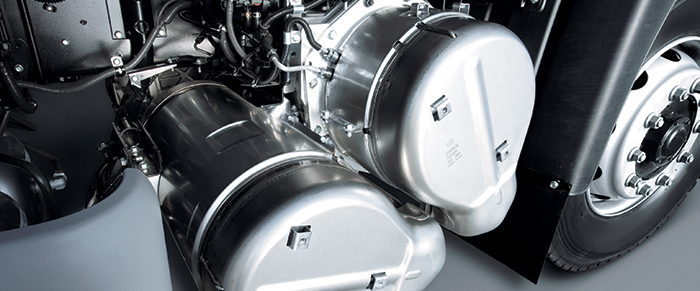Product development
At UD Trucks, we are constantly thinking about tomorrow’s truck. As we begin to serve more and more markets around the world, we are faced with new demands from our customers—the one factor that drives our passion and innovation more than anything else.However, many of our newest technologies are not immediately apparent when you first look at our trucks. While we are proud of the ongoing refinements in the look of our vehicles, many of the factors making our trucks safer, more economical, and more versatile with reduced environmental impact are technologies within the vehicle.

FLENDS: UD Trucks’ Unique Technology
Diesel engines have high thermal efficiency and lower fuel consumption than gasoline engines—meaning lower CO2 emissions. Particulate matter (PM) and nitrogen oxides (NOx) emissions are a more difficult issue: PM is produced at lower temperatures and during incomplete combustion, while NOx is produced during complete combustion at high temperatures. It was difficult, therefore, to find a system that could reduce both. In 2004, UD Trucks developed the Final Low Emission Diesel System (FLENDS), which combines ultra-high-pressure fuel injection with selective catalytic reduction (SCR) technology. FLENDS can reduce both PM and NOx emissions at the same time, but also provides low fuel consumption, and therefore reduced CO2 emissions. This was the first time ever that such as system was implemented on production trucks as a solution for attaining lower exhaust emissions from diesel engines.FLENDS was launched one year ahead of Japan’s 2005 New Long-Term emissions regulations. Although they were the strictest regulations in the world at the time, they were more than met by FLENDS. Through further improvement of the Urea SCR catalyst and large-scale PM reduction the equipment more than met the even more stringent standards of the 2009 Post-New Long-Term (PNLT) emission regulations.
Future technologies
As with its development of the revolutionary FLENDS emission control system, UD Trucks remains committed to researching, developing and implementing future technologies. These promise greater safety, efficiency and productivity, while also continuing to reduce environmental impact and increase sustainability.Platoon driving
It has long been known that one vehicle driving closely behind another will see much lower wind drag, and therefore much better fuel economy. In turn, this also reduces CO2 emissions and environmental impact. However, it is not safe or legal for drivers to follow another truck at a distance of mere meters at highway speeds.
In a project conducted by the Japan Automotive Research Institute (JARI), UD Trucks has participated in the use of research technology known as Cooperative Adaptive Cruise Control (CACC). This makes use of wireless technologies to allow completely automated control of truck acceleration and deceleration—the driver simply steers. In actual testing, a fleet of trucks was able to travel safely at a distance of just 20 meters while traveling at 80 kilometers per hour. CACC platoon driving was shown not only to reduce wind drag and therefore improve operational and fuel efficiency, but automated driving further increased fuel efficiency by eliminating the uneven braking and acceleration of a human driver.
Further research is needed, along with changes in both society and even legislation to make platoon driving possible, but CACC contains several technologies which could be applied in future projects.
New A.C.E. Institute
UD Trucks is jointly investing with other major truck, automobile and parts manufacturers for research into low-emission, high-efficiency diesel combustion systems by establishing the New A.C.E. Institute and participating in research activities there. The companies are engaged in the realization of future diesel engines with no pollution and reduced CO2.
